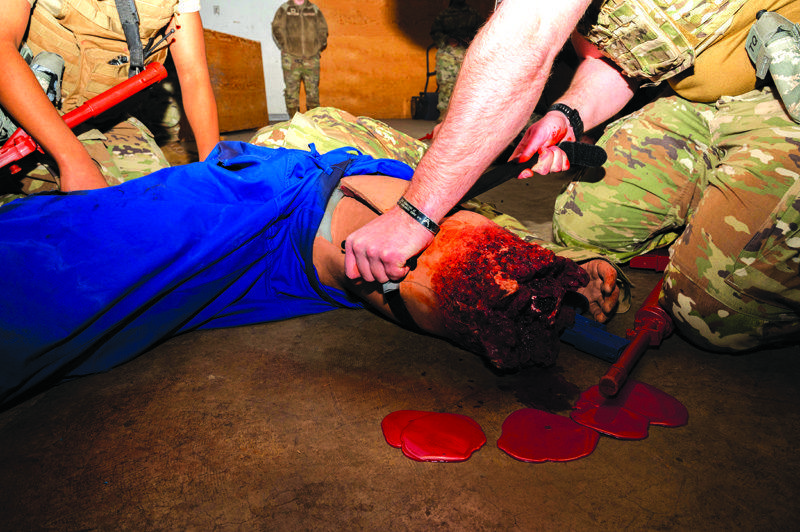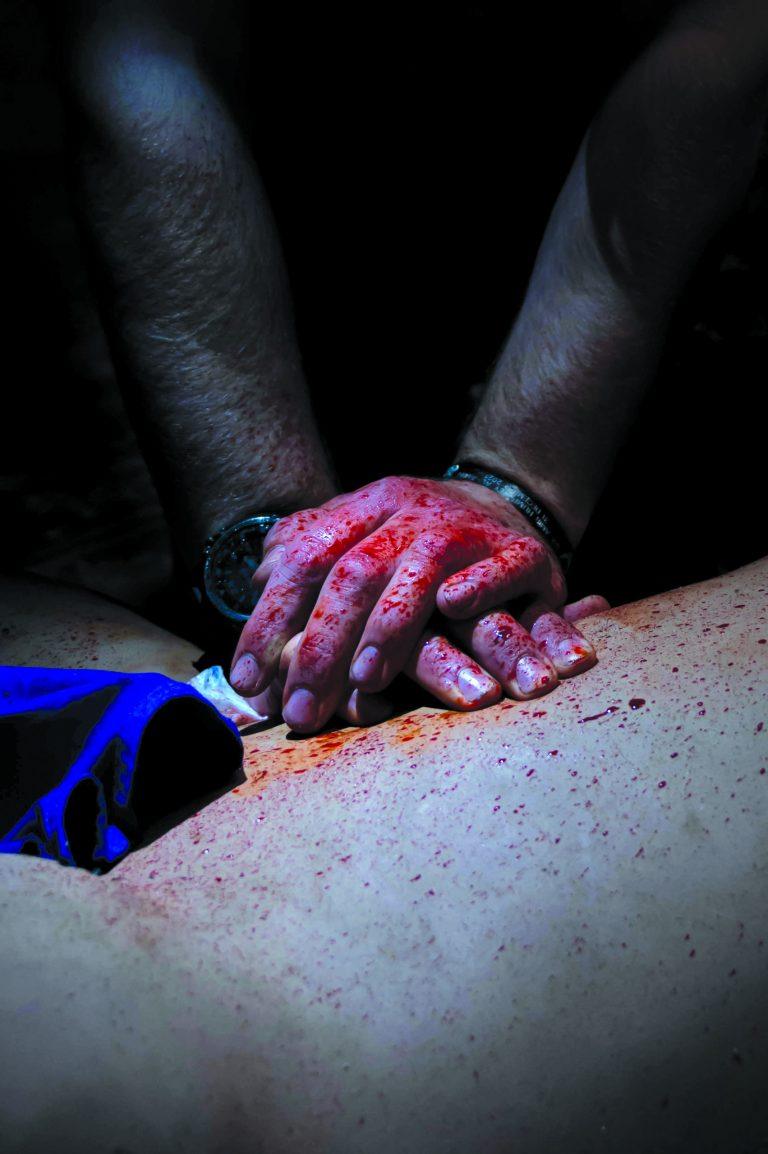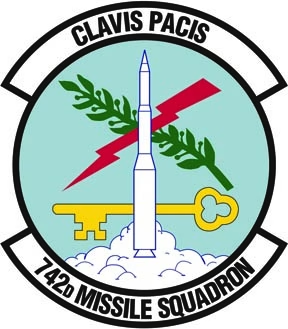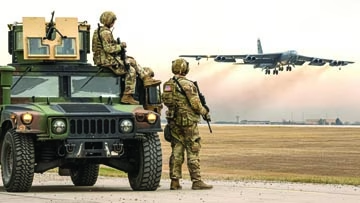MINOT AIR FORCE BASE, N.D. —
The leading preventable cause of death in combat is massive hemorrhaging, for this reason, the Department of Defense trains every Airman on Tactical Combat Casualty Care (TCCC).
“TCCC is the foundation of life-saving measures in a prehospital environment, which has been developed from years of learning from prior wars,” said Maj Jessica Scirica, 5th Medical Group flight commander of education and training. “The standardized training for our troops has been proven that it saves lives.”
Airmen are taught the acronym MARCH to easily remember the five steps needed to complete TCCC. MARCH ensures the most life-threatening situations in combat are triaged first and then followed by the next most threatening.
‘M’, massive bleeding, is completed first. Bleeding is the most common life-threatening emergency on the battlefield and becomes deadly the fastest. To address this issue an Airman is taught the proper use of a tourniquet, hemostatic gauze and pressure bandages. The proper use of these items can subdue major bleeding.
“A”, airway and resuscitation. Once bleeding is controlled, an Airman investigates the airway of the wounded, if an obstruction is identified it’s removed with haste and the injured is placed in a recovery position to maximize breathing capability.
During “R”, respiration, an Airman is trained to check for any injury to the torso impeding breathing. If a wound is located, it’s covered up with light pressure from the Airman performing TCCC or a vented chest seal; this is to avoid tension pneumothorax, which is pressure build-up in the chest that can be fatal.
“C”, circulation, is when an Airman will perform a head-to-toe sweep looking for any bleeding. If any wound is pinpointed, bleeding is controlled by using bandages and replacing them as necessary.
“H”, hypothermia, is treated last. Hypothermia does not only occur in a cold environment but also occurs as blood is lost and the body temperature lowers. An Airman treating the casualty would remove the patient’s wet clothes and get the patient dry as soon as possible. If no dry clothes or hypothermia blanket is available, an Airman may offer up their own clothes to save a wingman.
“The MARCH is simple because the simple repetition is the key to learning and memorization,” said Scirica. When you’re in a crisis, that repetition, that muscle memory, will make it easy to remember what needs to be done and act.”
Airmen must also recognize the threat to their own lives while rendering aid, two critically wounded troops are worse than one. It’s for this reason, TCCC has three phases: Care Under Fire (CUF), Tactical Field Care (TFC) and Tactical Evacuation Care (TACEVAC). During the CUF phase, there is an active threat, an Airman’s focus is on current life-threatening wounds, focusing on the “M” of MARCH.
The TFC stage can be completed once the location is safe or the wounded have been taken to a more secure area. During this point, the focus can be moved to the other phases of MARCH, where Airmen work to stabilize the wounded.
The TACEVAC is the phase where MARCH has been completed and the injured is moved to a definitive treatment area. Once the injured is evacuated, a medical expert takes over treatment.
“I have deployed six times, all down range, and I have seen firsthand the importance of this life-saving training,” said Lt. Col. Donna Eaton, 5th Medical Group chief nurse executive. “One may feel they are just checking a box like any other training, but this training can be critical in saving a life.”
During the conflict in Afghanistan, TCCC increased survival rates for critically injured casualties increased from 2.2% to 39.9%. Team Minot trains upwards of 5,000 Airmen on TCCC every 3 years. It is the Air Force’s goal that 100% of active-duty members are to be trained on TCCC to stop preventable deaths.















